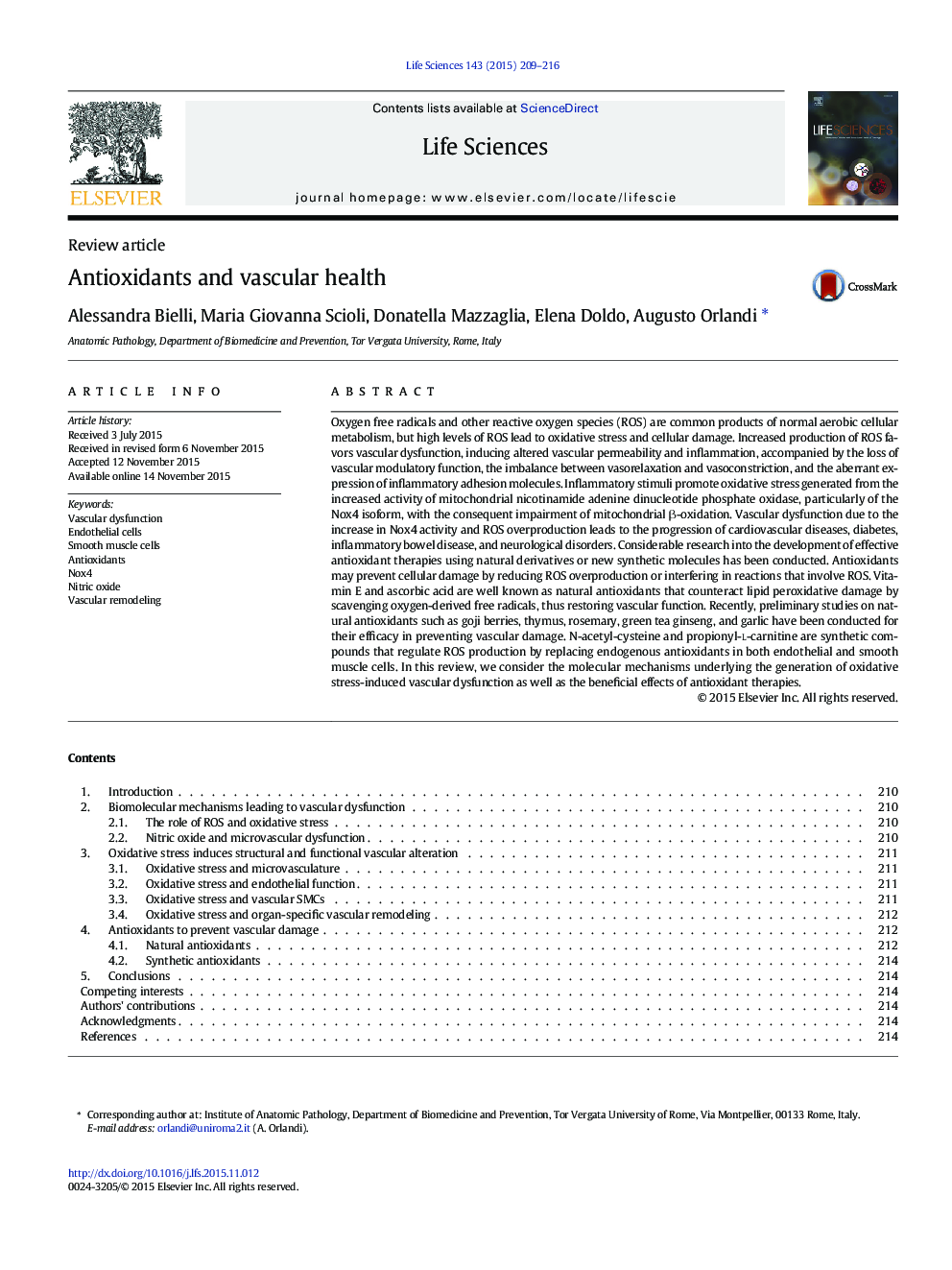| کد مقاله | کد نشریه | سال انتشار | مقاله انگلیسی | نسخه تمام متن |
|---|---|---|---|---|
| 2550693 | 1560585 | 2015 | 8 صفحه PDF | دانلود رایگان |
Oxygen free radicals and other reactive oxygen species (ROS) are common products of normal aerobic cellular metabolism, but high levels of ROS lead to oxidative stress and cellular damage. Increased production of ROS favors vascular dysfunction, inducing altered vascular permeability and inflammation, accompanied by the loss of vascular modulatory function, the imbalance between vasorelaxation and vasoconstriction, and the aberrant expression of inflammatory adhesion molecules. Inflammatory stimuli promote oxidative stress generated from the increased activity of mitochondrial nicotinamide adenine dinucleotide phosphate oxidase, particularly of the Nox4 isoform, with the consequent impairment of mitochondrial β-oxidation. Vascular dysfunction due to the increase in Nox4 activity and ROS overproduction leads to the progression of cardiovascular diseases, diabetes, inflammatory bowel disease, and neurological disorders. Considerable research into the development of effective antioxidant therapies using natural derivatives or new synthetic molecules has been conducted. Antioxidants may prevent cellular damage by reducing ROS overproduction or interfering in reactions that involve ROS. Vitamin E and ascorbic acid are well known as natural antioxidants that counteract lipid peroxidative damage by scavenging oxygen-derived free radicals, thus restoring vascular function. Recently, preliminary studies on natural antioxidants such as goji berries, thymus, rosemary, green tea ginseng, and garlic have been conducted for their efficacy in preventing vascular damage. N-acetyl-cysteine and propionyl-l-carnitine are synthetic compounds that regulate ROS production by replacing endogenous antioxidants in both endothelial and smooth muscle cells. In this review, we consider the molecular mechanisms underlying the generation of oxidative stress-induced vascular dysfunction as well as the beneficial effects of antioxidant therapies.
Figure optionsDownload high-quality image (140 K)Download as PowerPoint slide
Journal: Life Sciences - Volume 143, 15 December 2015, Pages 209–216
